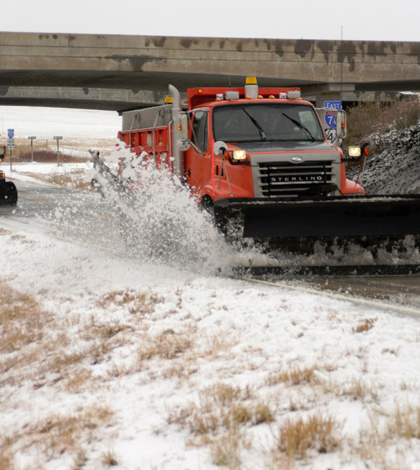USGS report reveals rising chloride concentrations in northern U.S. streams

When the air turns frigid and roadways across the U.S. grow slick with ice, many communities sow their streets with salt to improve driving conditions. Eventually, however, snow and ice melt, washing all that salt into the water supply.
A new U.S. Geological Survey report shows that concentrations of chloride, a chemical component of sodium chloride (salt), exceed toxic levels in 84 percent of the northern U.S. streams tested. Published recently in Science of the Total Environment, the report follows up on a 2010 USGS study on stream chloride levels. The new report builds upon the 2010 study by examining trends in chloride concentrations over time, and is based on data from USGS, U.S. Environmental Protection Agency and Milwaukee Metropolitan Sewerage databases.
“The first thing we did was gather as much data as we could from the sites that were near urban areas, and chose a few sites that were agricultural and forested,” said Steven Corsi, research hydrologist with the USGS. In addition to 29 northern sites, they selected one site in the southern U.S. to see if the trends were geographically contained.
“We analyzed the data based on a number of different factors,” Corsi said. “The goal was to look at chloride trends over time, but there are other things that influence those trends.” Those influencing factors include streamflow, which can dilute chloride concentrations at high rates, and other seasonal processes.
The researchers found that chloride concentrations were highest in the winter, fitting the hypotheses that runoff from road deicing contributes heavily to increased chloride toxicity in streams. However, long-term chloride concentrations also appeared to be rising, even during non-winter months, leading to higher baseline concentration levels. High chloride concentrations can harm certain freshwater organisms, from fish to waterfowl to invertebrates.
When road salt is applied, some of it dissolves and infiltrates into the groundwater system, where chloride can remain in slow circulation for months or years before discharging through streambanks during periods of low flow, Corsi said. This means that chloride runoff from any given winter is piling on top of groundwater concentrations from the previous winter — or even the one before that. As chloride infiltrates deeper into the groundwater system, it can enter wells that supply drinking water.

“There’s a definite relation between chloride concentrations in a stream and urban land use in a watershed,” Corsi said. As urban land use goes up, so too do chloride concentrations. That trend has been on the rise since the 1990s, which Corsi said could be the result of increased snowfall, the application of more salt per unit of pavement or higher baseline concentrations, though “it’s likely a combination of those three things.”
While some communities have turned to alternative deicing methods during the winter months, such as beet juice, sugars and other organic chemicals, Corsi said these shouldn’t be seen as a panacea to the salt problem.
“They may reduce the chloride applied, but the fact is that they’re still applying lots of chemicals over the land surface,” he said. “If you start using organic chemicals, they influence the oxygen demand in water bodies, and they may also cause biofilm growth on the stream.”
“That’s one potential impact that’s really not widely recognized at the moment,” he said.
Top image: Road salt runoff may contribute to a rise in chloride concentrations of streams. (Credit: Kansas Department of Transportation)




0 comments